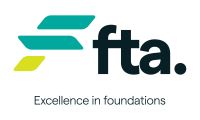Contract administration involves managing your contracts to make sure you comply with and fulfill the contract conditions. Good contract administration ensures customer satisfaction and minimises disputes.
Master Builders has developed a range of resources to help with the administration process, including:
- Construction period calendar – calculate the anticipated project completion date
- Project documentation checklist – ensure each step of the building process has been completed
- Supervisors' construction checklist – for supervisors doing new or renovation work
- Inclement & wet weather calendar (contracts) – calculate inclement weather days for residential building contracts (must be logged in as a member to view)
- A guide to pricing margin PDF – our handy guide of typical overheads to consider when pricing a job.
Quoting and pricing margins
When quoting a building project, it’s important to ensure your margin covers a portion of your business running costs (offsite overheads); risks that may eventuate and end up being at your cost under the contract (contingency) and profit. It is also important to adequately price the costs incurred in carrying out the works onsite that are not included in subcontract amounts (onsite overheads).
In conjunction with Mitchell Brandtman and Master Builders members, we’ve developed a handy guide that includes all the typical overheads to consider when pricing a job. Whether it’s typical offsite overheads (like staff costs, management systems, insurance or other costs) or onsite overheads (like site staff/labour, gantries, temporary fencing, site amenities or other costs) – this guide is a great reference tool to keep on hand.
Pricing overheads
Typical offsite overheads
- Business staff (administration, accounting/bookkeeper, management, etc.)
- Staff training
- Office expenses (rent/mortgage, water/rates, electricity, computers, phones, stationary, cleaning etc.)
- Estimating, tendering and procurement
- Management systems (Procore etc)
- Car lease and petrol
- Insurance of cars and buildings - not project specific
- Licensing fees
- Project/retention trust account costs including audits (annual audits of retention trust accounts as well as QBCC audits of project and retention trust accounts)
- Accountant fees for MFR compliance (including annual reporting) and taxation compliance
- Taxes and charges incurred by the business
- Miscellaneous legal fees, external accounting, consultants, etc.
- Bad debts
- Banking fees.
Typical onsite overheads/Preliminaries
- Insurance
- Bank guarantees/retention
- Maintenance/defect liability
- Hoarding
- Gantries
- Temporary fencing
- Temporary Access
- Footpath closure work zone permits
- Site Offices/site shed
- Site amenities
- Site signage/noticeboards
- Temporary electricity/plumbing/water
- Site licences
- Site communication (radios/mobiles/internet etc)
- IT/computers
- Photocopiers
- Printing
- Site survey
- Plant hire
- Hoist
- Builders lift
- Crane
- Mobile crane
- Forklift
- External scaffold
- Mobile scaffold/EWP/cherry picker
- Small tools/tool hire
- Safety
- First aid
- Environmental
- Site cleaning
- Waste disposal (skip hire, bins etc.)
- Site security
- Maintenance and warranty
- Project consultants
- QLeave
- Authority fees (e.g. QFES)
- Council fees
- Site staff/labour
- Project Manager
- Project Engineer
- Design Manager
- Contract Manager /Administrator
- Construction Manager
- Site Manager
- Cadet/Graduate CA
- Leading Hand/Junior Foreman
- Foremen (Structures, Finishes etc.)
- Labourer (1,2,3)
- WHS Coordinator
- Traffic Controller.
Cost adjustment guidelines (commercial)
Rising costs in labour and building materials make it difficult to price building work. There's a risk that, during the course of a contract, the costs will rise or fall from the costs initially estimated. Generally, this risk can't be controlled.
To overcome this, contractors may end up pricing tenders conservatively or guess the effects of changes in costs.
To explain it even further, we've produced guidelines to explain cost adjustment, and provide sample cost adjustment provisions for inclusion in contracts where required.
COST ADJUSTMENT GUIDELINES PDF
Cost adjustment provisions in contracts address this risk by providing mechanisms for adjusting contract payment to reflect changes in costs, and apply to long-term costs and some specific costs. So, contractors retain the risk of short-term fluctuations in costs, and the risk of the calculated cost adjustment not reflecting actual changes in costs.
Applicable items
Cost adjustment may be applied to the following:
- Labour and materials
- Currency exchange rates for goods purchased in foreign currency
- Other costs, including duties and taxes or shipping and transport.
In normal contracting strategies, cost adjustment provisions should only be applicable to costs, typically long-term costs that might cause tenderers to overestimate or uneconomically underestimate contract prices.
Home Warranty Scheme
All Queensland Building and Construction Commission (QBCC) licensees who perform residential construction work with an insurable value of more than $3,300 (including GST) must take out cover under the Queensland Home Warranty Scheme when working directly for owners.
Any QBCC licensee (builder/trade contractor), not just house builders, who carry out work directly for a residential owner, must collect a home warranty premium from the owner and pay it to the QBCC. The only exceptions are licensees working as subcontractors for a principal contractor, or working for a person who holds an owner-builder permit for the relevant construction.
This insurance provides home owners with cover for loss where the licensed contractor does not complete the contracted works or fails to rectify defective work.
Read more about how to handle the GST component of insurance premiums on the QBCC's website.
The following is a list of the types of work that are covered by the Home Warranty Insurance Schemer if for residential construction work with an insurable value of more than $3,300 (including GST), performed on a home or unit in a building with less than three storeys (excluding one floor if more than 50% of the floor is for accommodation of motor vehicles):
- Construction of a new home, related roofed building (e.g. a garage), townhouse or multiple unit dwelling (no more than 3 storeys)
- Extension, addition, alteration, renovation or repair of any of the above buildings
- Replacement or refit of fixtures or fittings in a kitchen or bathroom
- Work on a deck or verandah, attached to a residence
- Building work that affects the structural integrity of the building
- Work on or in the home or related roofed building (e.g. painting)
- Work on a deck or verandah attached to a home or a related roofed building
- Anything attached to the home or related roofed building and which requires building or plumbing approval
- Any structure attached to the external part of a home or related roofed building which has no other supporting structure (e.g. awning, handrail)
- Stairs or ramp which provide access, and are permanently attached to the home or related roofed building
- Swimming pools.
A comprehensive list of the types of work that is insurable is available on the QBCC website.
Variations
Variations to the scope of the works under residential contracts may lead to an increase in the contract price. If the accumulative value of variations increase the contract price by $5,000 or more the contractor will have to pay an additional insurance premium. The contractor should make provision in the pricing of the variations for the addition premium. Payment of the additional premium must be made before the variation work is carried out.
To find out if your job should be covered, read the information about Insurable Residential Construction Work on the QBCC's website or call the QBCC on 1300 27 22 72.
Need more information?
If you haven’t found the answer to your questions on our website, give us a call or email us.





